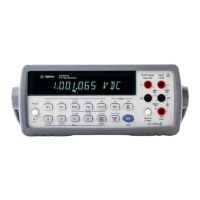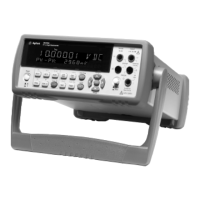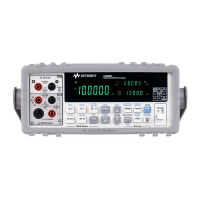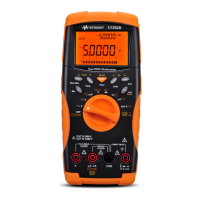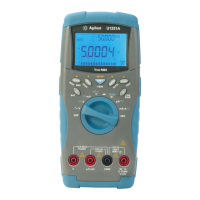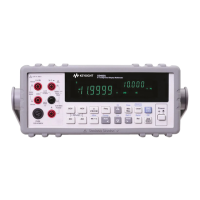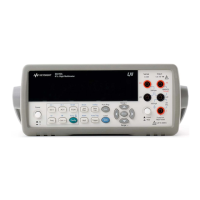Chapter 4 Making Measurements 125
For example (using the first equation), if the reading rate is 200Hz and the
DEGREE is 20, the time constant is:
Using the second equation with the same reading rate and DEGREE
produces:
t
» (1/200) × 20 = 0.1 seconds
RMS The RMS math operation can be used to compute the combined RMS value
of the AC and DC components of digitized (using the DCV, DSAC, or DSDC
command) low frequency signals.
Note For repetitive AC signals of 1 Hz or greater, the synchronous AC
measurement method can be used instead of the RMS math operation. If the
AC signal is 10Hz or greater, the analog AC method can be used. If the
signal is 20Hz or greater, the random method can be used. You can also
determine the RMS value of the AC component of sinewaves by digitizing
(using the DCV, DSAC, or DSDC command) and enabling the STATS math
operation. After a number of readings, the result in the SDEV register is the
RMS value of the AC component of the input signal.
The RMS math operation takes the square root of the preceding FILTER
operation with the reading and the previous result first squared. The RMS
math equation is:
Where:
Previous Result is initially set to the value of the first reading and thereafter
is set to the result of this FILTER operation.
Reading is the latest reading taken.
DEGREE selects the step response of the filter.
Measuring
Temperature
The temperature-related math operations convert the measured resistance of
a thermistor or RTD into a Fahrenheit or Celsius temperature reading. Table
25 describes each of the temperature-related math operations. The resistance
measurement can be made in either 2-wire ohms (OHM command) or 4-wire
ohms (OHMF command). For the greatest accuracy, use the 4-wire ohms
mode. Conditions that affect the accuracy of a typical resistance
measurement also affect the accuracy of temperature measurements (see
"Resistance Measurements", and "Calibration" in Chapter 3).
t
1
200
---------
1
20
20 1–
---------------
ln
-------------------- 1– 0.092 Seconds==
Result
PreviousResult
2
DEGREE 1–()·
DEGREE
Reading
2
DEGREE
-------------------------
+
----------------------------------------------------------------------------------------=
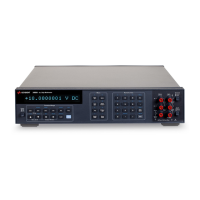
